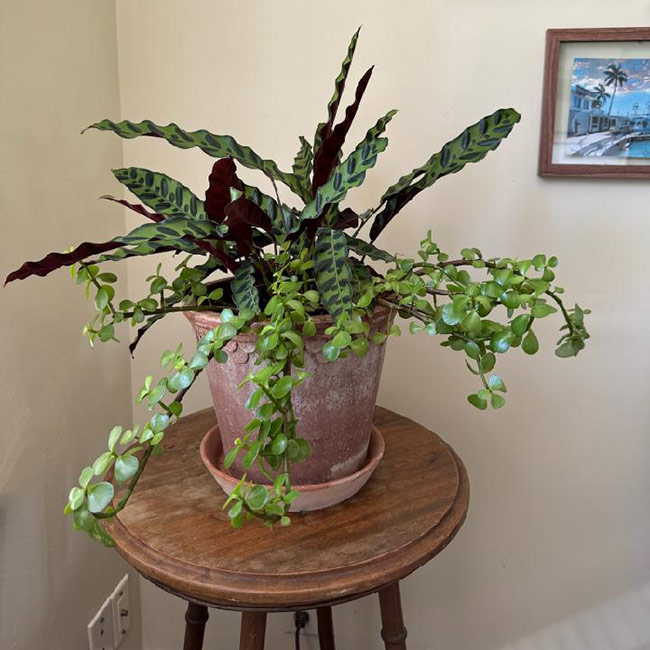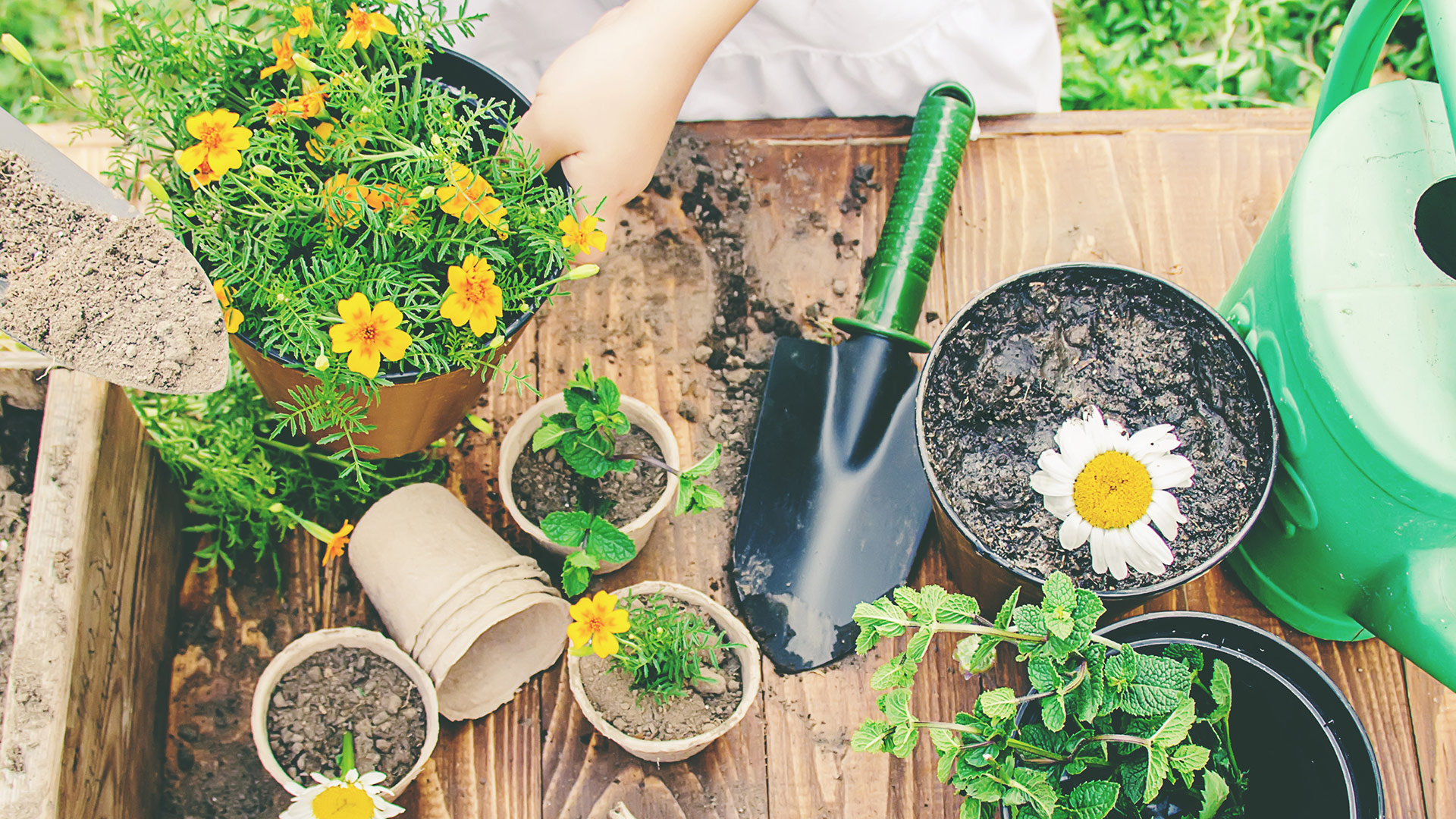"I’m a plant's worst nightmare - I can't even keep a succulent!"
"I wasn’t born with a green thumb."
"Cute herb garden! I could never."
"I guess I’m just more of a dog person…"
Sound like you?
We’ve got good news:
People aren’t just born with green thumbs.
Sure, some folks have an easier time with plants than others, but the same goes for animals, playing sports, learning languages, making art… you get the idea.
Like most skills, you don’t need innate talent in order to learn; you just need the right information and a little practice.
Secrets of the Garden
Until you learn the nuances of reading plant language, it seems like a huge mystery. So, we’re making it as easy as possible for you to try your hand at starting your own garden!
Whether you’re trying your hand at herbs, flowers, trees, or houseplants, most plants’ basic needs are the same: soil, sun, nutrients, and water. The ratios are where skill comes into play. Grab your gloves and leafy friends!
We’ll talk about how to know what your plant needs by reading its communication, basic terms you’ll hear in gardening circles, and how to solve common plant parenting woes.

Sunlight
Plants don’t eat like we do (mostly; there are exceptions), so they need an alternate source of energy. Leaves contain photoreceptors in their cells called chloroplasts that help the plant convert light energy into usable energy.
Plants need sunlight. There’s 2 main kinds:
Direct Sunlight: The plants’ leaves need to be able to see the sky. If you’re standing where your plant lives, you should be able to see the sky.
Indirect Sunlight: The plant prefers ambient light, like in a bright room or a shadier outdoor spot. It doesn’t have to see the sky in order to thrive.
If you’re purchasing a plant from a home improvement store, it probably has a small care card included. The card typically sticks up out of the soil, and one of the first things it lists is the plant’s sunlight needs. Follow the card’s suggestion as a jumping off point!
Full Sun: 6+ hours of direct sun exposure most days. These plants’ leaves should have a direct line of sight to the sky or be kept right by a window.
Partial Sun: 3-6 hours of direct sunlight most days. These plants do well in sunrooms, porches, front stoops… you get the idea.
Partial Shade: 2-4 hours of direct sunlight. These plants can also handle patchy sunlight, like light that comes through tree leaves.
Full Shade: 0-2 hours of direct sunlight, or a steady stream of low light. Think hallways, the side of the house that’s almost always shady, or a spot farther away from the windows.
Just like us with our food, too much of a good thing can be detrimental, so don’t take a plant that prefers partial sun and drop it in a full sun spot. It’ll get baked, and you’re back to square one.
Other terms you may run into:
Morning Sun: Put this plant in an east-facing location. It likes the sun that comes earlier in the day, when it’s less intense.
Afternoon Sun: Put this plant in a west-facing location. It handles the heat of the day and intense light well.
Sunlight Trouble
When we get sunburnt, it’s obvious. In their own way, plants can get sunburn, too.
Yellow or pale leaves are a classic sign of too much sun, as are crispy leaves, dry brown patches, and red or brown veins/dots on the leaves.
When you notice these signs, don’t panic! Simply give the plant a little less light and look for these signs to clear up.
Avoid plunging a sunburnt plant into complete darkness. Remember, it still needs light to function… just not as much as it was exposed to before.
Water & Soil
Water and soil go hand in hand, since half the plant - or more - lives beneath the surface. Plants can be extremely emotive, and that usually communicates how they feel about their watering status.
To start, go back to the care card on your plant. It should have a recommended watering frequency or the plant’s preferred soil dryness.
Drainage: This term usually refers to how the soil or pot retains water. Most pots have drainage holes - this is a good thing. Plant roots need water but generally don’t want to be in standing water (kind of like our feet, which can get wet but shouldn’t stay wet for too long). Well-draining soil is also good for this.
Finger Test: Stick a finger about 2-3 inches into your plant’s soil to get an accurate read on how damp the soil is. If your plant likes moist soil but you feel dry soil, add water! If the soil already feels damp, leave it alone.
Top Watering: Pouring water onto the soil, the way most folks water plants.
Bottom Watering: Setting a potted plant into a water filled sink or bucket and allowing the soil to absorb water. Succulents especially like this kind of watering because it mimics desert flash floods (only do this once a month for succulents, since they like dry soil).
Droopy leaves are often a sign the plant needs water. As you get to know your plant, you’ll discover how frequently it likes to be watered. Be observant, and try to establish a schedule. Start at once a week, and increase or decrease as needed!

Water Trouble
Root Rot: Overwatering can cause roots to deteriorate and, well, rot away. Avoid by watering only when the plant needs it! Don’t let potted plants stay in standing water.
Fungus: Common in roses and usually treatable by watering in early parts of the day and pruning seasonally. Neem oil also helps!
Things You Don’t Need to Worry About When You’re Starting Out
- Fertilizer - Plenty of plants do just fine without; it’s bonus
- Mulch - Helps with weed control and water efficiency; this is also bonus
- Pesticides - Neem oil fixes a lot of issues; treat the area once every 2 weeks until the problem goes away
- Pruning - A seasonal or annual activity, depending on the plant
- Special soils - Plants don’t tend to be quite that picky. Just read the label on the soil you choose (potting soil for potted plants, succulent and cactus soil for those plants… you get the idea)
Enjoy Your Green Thumb!
This is by no means an exhaustive guide to every plant ever. It’s a great jumping-off point for the beginner gardener!
We *adore* helping people learn how to bring nature into their homes and lives. Please, don’t hesitate to reach out to us with your gardening questions and queries via phone or email!

